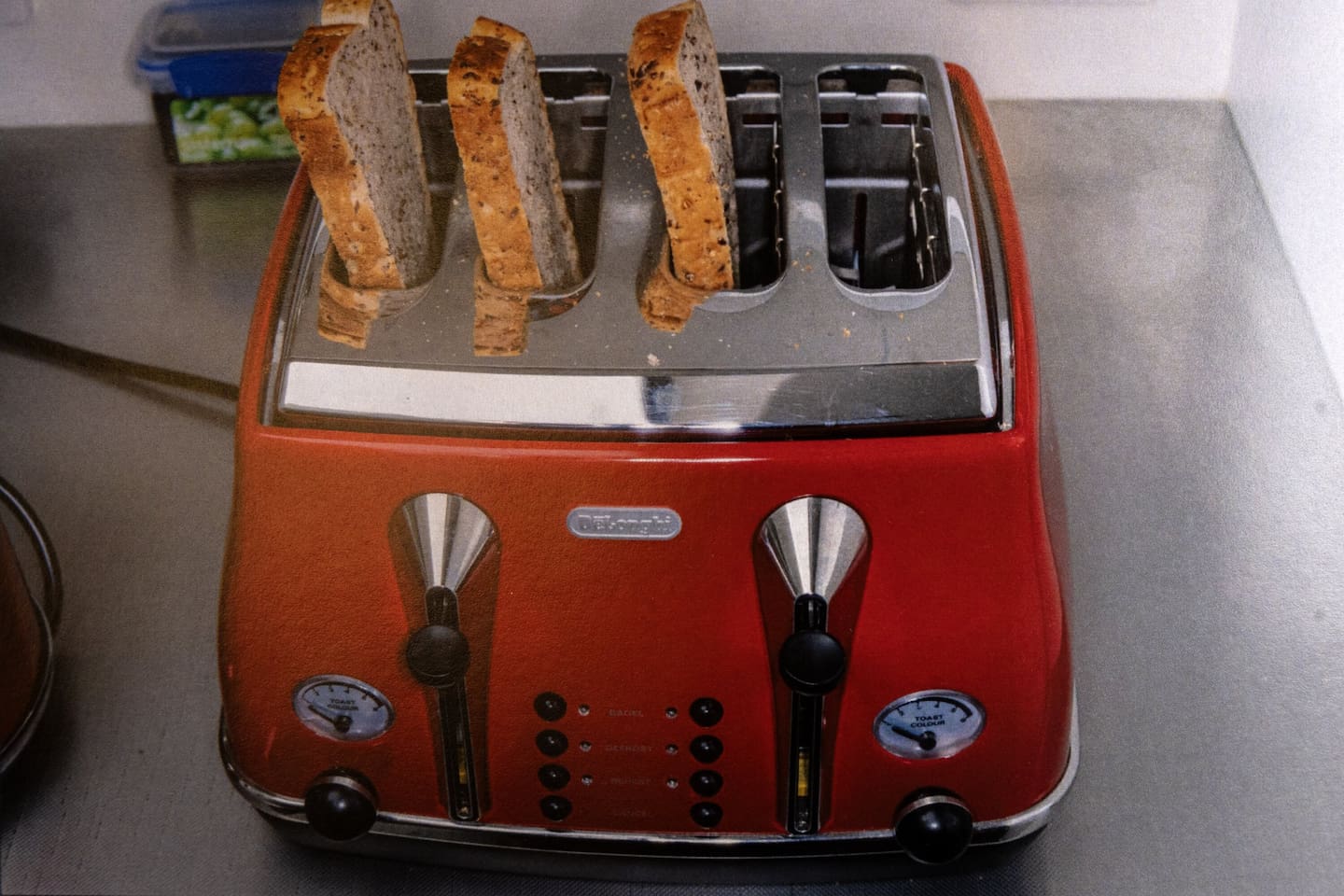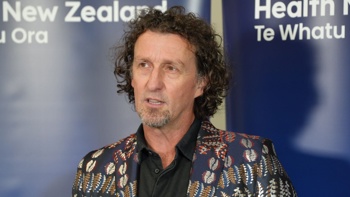WARNING: DISTRESSING CONTENT
After flying from Louisiana to Auckland last year, an American crime scene examination expert discovered a blood stain at murder defendant Philip Polkinghorne’s home. But whether the finding will ultimately help or hurt the eye surgeon’s defence at his ongoing murder trial is a matter jurors will have to mull.
The stain could help explain a mysterious graze found on the eye surgeon’s head shortly after emergency responders arrived at his Remuera home on the morning of wife Pauline Hanna’s death. But prosecutors strongly hinted today that it could instead show Polkinghorne’s willingness to tamper with evidence.
Polkinghorne, now 71, is accused of having fatally strangled his wife of 24 years inside their Remuera home before staging the scene on April 5, 2021, to look like a suicide by hanging.
Prosecutors have spent the past five weeks calling witnesses in the High Court at Auckland to support their theory that the surgeon lashed out at his wife while high on methamphetamine, possibly during an argument over his relationship with overseas escort Madison Ashton or the hundreds of thousands of dollars he had spent on Ashton and other sex workers.
The defence, now in its second day of calling witnesses, has repeatedly suggested that Hanna’s death was exactly as it initially seemed – self-harm by someone who suffered long-term depression and was under immense amounts of work stress.
One previously unanswered question was the abrasion that paramedics and police noticed on Polkinghorne’s head as they arrived at the scene of Hanna’s death. The doctor was asked about it, both by first responders and during a recorded police interview just hours later. He had no explanation, which prosecutors noted during their opening address in July.
But expert witness Timothy Scanlan, who started his own forensic consulting firm after overseeing a large crime lab in suburban New Orleans, told jurors today that he found a smudge of Polkinghorne’s blood on the wooden siding of the stairs next to where Hanna’s body was found.
It could potentially give credence to a defence suggestion that Polkinghorne hit his head without realising it while trying in a haze of panic to untie his wife after discovering her body.
But there are two very obvious problems with that contention, the Crown responded: the sample was taken by the defence expert two years after Hanna’s death, and the stain he found on the stairway looked noticeably different than the one photographed by police in the days immediately following her death.
- Power expert says washing machine didn't run morning of Hanna's death
- Polkinghorne's lawyer rips into 'intoxicated' police as defence takes the offensive at murder trial
- Polkinghorne murder trial not sitting today for reasons undisclosed
- Where's Madison? Crown wrapping up, but star witness nowhere to be seen
- Surprise Crown witness casts doubt on claim Hanna's phone used to draft 4am messages
- Polkinghorne trial: Phone records show aborted 4am mystery messages on day of wife's death
- Pauline Hanna started typing message on phone 4am morning of death, defence says
A stain found on the stairs next to Pauline Hanna's body in April 2021 was photographed (left) but not tested for DNA because forensic scientist Fiona Matheson said the area tested negative for blood. Overseas forensic expert Timothy Scanlan returned to the Remuera home two years later and found a stain in the same location (right), he testified at the Philip Polkinghorne murder trial. The stain tested positive for Polkinghorne's DNA.
“Would you agree with me there’s always a risk of interference or contamination of a scene when it’s not under control ...?” Crown prosecutor Brian Dickey asked the expert, who appeared via audio-video feed.
“I would say that’s fair,” he responded.
Both also agreed that it might be a risk when the subject of an inquiry has full access to the scene being tested.
The prosecutor noted that forensic scientist Fiona Matheson, a longtime employee of New Zealand’s forensic testing facility, earlier told jurors she tested the area immediately after Hanna’s death and saw no indications of blood. She noticed a mark on the stairs and photographed it but did not send a sample for DNA testing because preliminary tests in the area excluded blood, she said.
Scanlan said he doesn’t believe his New Zealand colleague tested that precise area for blood, but Dickey disagreed. A transcript of Matheson’s testimony, a portion of which was repeatedly read aloud to jurors, was inconclusive enough to be touted by both sides as proving their point.
Regardless, the marking appears to have significantly changed in the years between Matheson’s review and Scanlan’s arrival at the house, Dickey said, suggesting they weren’t the same stain at all.
“One’s got a single line and one’s got a parallel line,” the prosecutor said. “These are two different lines, aren’t they?”
Scanlan agreed the stain he saw had been altered in some way – exactly how, it wasn’t his place to say – but insisted it was the same length and position as in the original photo.
“Are we dealing with obvious scene contamination?” Dickey asked.
“I think it’s a possible explanation – it’s not the only explanation,” the expert responded.
Defence lawyer Ron Mansfield, KC, pointed out that Polkinghorne’s sister, who arrived at the home before police and paramedics, had seen her brother in the area where the stain was found. The sister, however, has not testified.
Jurors also heard today from electrical engineer Ron Beatty, who was called by the defence to rebut an energy usage expert called by the Crown earlier in the trial. Paul Smith, who until recently was Consumer New Zealand’s product test manager, testified earlier that power usage data from the Polkinghorne home suggests the kettle and the toaster could not have been used at the same time in the two-hour period immediately before Polkinghorne said he found his wife’s body. It’s possible one of them could have been used, Smith said.
The defendant had told police he discovered his wife in the entryway of their home after going downstairs to make her toast and tea for breakfast.
Beatty, who has spent 52 years in the electricity industry, described his colleague’s analysis as “a failing actually of that side of the investigation”.
There wasn’t enough solid data about how warm the water was when it was put in the kettle and how much water was used to know for sure how much power it would have needed to boil, he said. The toaster, he noted, was turned down to very low. It’s possible they could have both been used, he said.

Photos of the kitchen toaster from inside eye surgeon Philip Polkinghorne's Remuera home have been entered into evidence at his murder trial in the High Court at Auckland.
The defence expert also did not think the couple’s washing machine could have been used that morning if the kettle and toaster were both in use. The room that Polkinghorne said his wife had slept in was found dishevelled, with a top sheet missing from the bed. A damp sheet was found in the dryer.
The Crown expert testified that it was possible the appliance could have been used, Dickey pointed out during cross-examination.
”I would exclude it,” Beatty repeated.
Earlier in the day, the defence called several witnesses – both former co-workers and neighbours in the small Coromandel community where the couple had a bach – who described Polkinghorne as a witty, friendly man who had a strong rapport with patients.
“He’s great,” said Rings Beach neighbour Dominic Foote. “Kind, generous, fantastic with my kids, great neighbour.
“I don’t think I’ve ever seen him raise his voice.”
He described his friend as having a dry sense of humour.
“For instance, he kind of had a habit of accidentally sinking his boats, so he started naming them names like the Bismarck and the Lermontov,” Foote said – references to a German warship sunk during World War II and a Soviet ocean liner that sank in Marlborough Sounds in 1986.
The testimony contrasted that of another Rings Beach resident who testified earlier in the trial that he had noticed the surgeon acting more erratically in the two years before Hanna’s death, leading the witness to wonder if he had been on drugs.
But Foote described Polkinghorne as “about as consistent as you get” – off to bed every night at 9.30, even on New Year’s Eve, so he could be up at 5 the next morning for diving or fishing.
The defence is expected to continue calling witnesses when the trial resumes tomorrow before Justice Graham Lang and the jury.
READ LIVE UPDATES FROM TODAY’S HEARING
Craig Kapitan is an Auckland-based journalist covering courts and justice. He joined the Herald in 2021 and has reported on courts since 2002 in three newsrooms in the US and New Zealand.
The Herald will be covering the case in a daily podcast, Accused: The Polkinghorne Trial. You can follow the podcast at iHeartRadio, Apple Podcasts, Spotify, through The Front Page feed, or wherever you get your podcasts.
Take your Radio, Podcasts and Music with you









